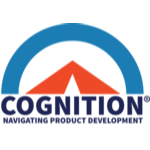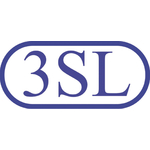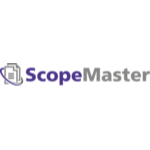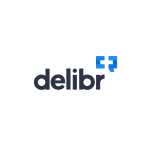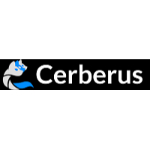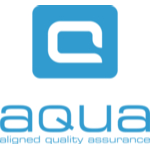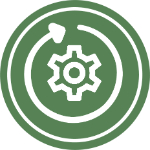TechnologyCounter provides genuine, unbiased real user reviews to help buyers make informed decisions. We may earn a referral fee when you purchase through our links, at no extra cost to you.
List of 15 Best Requirements Management Software
Showing 1 - 15 of 35 productsAirtable is a collaboration tool that helps teams organize and manage their work in a user-friendly way. With its intuitive interface and customizable features, Airtable streamlines complex processes and allows teams to work seamlessly together. From...Read Airtable Reviews
ObjectiF RM, a powerful and innovative software designed to streamline requirements management and improve project efficiency. With its advanced features and user-friendly interface, ObjectiF RM is a solution for businesses looking to effectively man...Read ObjectiF RM Reviews
Visure Requirements, a powerful software designed to streamline the process of managing requirements for any project. With Visure, teams can efficiently capture, track, and analyze requirements, ensuring successful project delivery. With its intuitiv...Read Visure Requirements Reviews
ReqView is a and user-friendly requirements management tool designed to streamline the process of creating, managing, and tracing project requirements. With an intuitive interface and numerous collaboration features, ReqView simplifies the complexiti...Read ReqView Reviews
Cognition Cockpit is a software designed to enhance and optimize cognitive performance. Developed with a deep understanding of the human brain, this powerful tool empowers individuals and teams to unlock their full potential and reach new levels of e...Read Cognition Cockpit Reviews
Cradle is a software solution for managing your business operations. With intuitive user interface and robust features, Cradle streamlines your daily tasks, freeing up your time to focus on growth and success. Boost productivity and efficiency with C...Read Cradle Reviews
Blueprint is a tool designed to streamline and simplify your project management process. With its user-friendly interface features, you can effortlessly plan, track, and collaborate with your team to bring your projects to life. Say goodbye to comple...Read Blueprint Reviews
ScopeMaster is a software designed to simplify and enhance your software development process. With its advanced algorithms and intelligent analysis, ScopeMaster takes on the tedious task of requirements gathering and ensures accuracy and efficiency l...Read ScopeMaster Reviews
Delibr is an innovative productivity tool designed to help teams collaborate and make well-informed decisions. With its user-friendly interface and powerful features, Delibr streamlines the decision-making process and promotes efficient communication...Read Delibr Reviews
Cerberus Testing is a software that takes your testing process to the next level. With its innovative features and user-friendly interface, Cerberus Testing simplifies and streamlines the testing process, giving you more accurate results in a fractio...Read Cerberus Testing Reviews
Doc Sheets the ultimate tool for organizing and collaborating on your documents. Say goodbye to scattered files and hello to seamless teamwork. With its user-friendly interface and powerful features, Doc Sheets is here to simplify your document manag...Read Doc Sheets Reviews
Aqua ALM, a revolutionary software designed to streamline your project management process. With its user-friendly interface features, Aqua ALM simplifies the entire workflow, from planning and tracking to reporting and collaboration. Say goodbye to c...Read aqua ALM Reviews
Improve your products adherence to regulatory specifications with Smart Specification software. Smart Specification tool simplifies the process of meeting physical, chemical, microbial, nutritional, and allergen requirements, as well as recipe and la...Read Smart Specification Reviews
Accompa, the all-in-one solution for managing your projects, tasks, and deadlines. With its user-friendly interface and robust features, Accompa streamlines your workflow and increases productivity. Say goodbye to scattered documents and missed deadl...Read Accompa Reviews
CaseComplete, the dynamic software that simplifies and streamlines the process of requirements management. With its intuitive interface features, CaseComplete allows teams to efficiently gather, organize, and track requirements, ensuring successful p...Read CaseComplete Reviews
- What Is Requirements Management Software?
- Top Reasons Why Businesses Need Requirements Management Software?
- What Are the Top Key Features of Requirements Management Software?
- What Are the Top Benefits of Requirements Management Software?
- What Are the Steps to Choose the Right Requirements Management Software?
- What Are the Types of Requirements Management Software for Different Industries?
- What Are the Technology Trends for Best Requirements Management Software?
- What Are the Deployment Options for Requirements Management Software?
What Is Requirements Management Software?
Requirements management software is a computer program designed to facilitate the administration of information and the generation of documentation pertaining to projects within organizations.
The requirements management systems aids in several duties, including but not limited to, monitoring the individuals who have made requests for specific alterations, generating project specifications and functional requirements, addressing client requirements, optimizing communication processes, and overseeing modifications to project scope.
Through the utilization of online requirements management tool, teams are able to effectively monitor and manage tasks and features that are currently being worked on as well as those that have been successfully accomplished.
When effectively utilized, this particular application has the potential to enhance team members' communication efficiency and maintain project progress. The best requirements management software has the capability to offer visual monitoring of a project's advancement, thereby facilitating the maintenance of current information regarding task statuses and ensuring accountability among team members.
Furthermore, this program provides assistance for many languages, versions, and platforms, hence facilitating enhanced collaboration across multiple projects.
In general, the utilization of requirements management systems is a commendable resource for teams seeking to enhance the efficiency and organization of their project management procedures. This software facilitates the maintenance of comprehensive oversight over project specs and requirements, while concurrently streamlining the overall process.
Top Reasons Why Businesses Need Requirements Management Software?
1. The explicit identification of user demands and the tracking of modifications during the development process are beneficial.
2. The identification of requisite documentation is crucial in fulfilling customer requirements and adhering to project deadlines.
3. This aids with the assurance that the project is effectively providing the appropriate functionality to the intended users.
4. In order to precisely establish requirements, it is necessary to identify the parties involved and comprehend their respective needs.
5. The utilization of a standardized format for user stories or use cases aids in the continuation of a template that may be employed for future projects, promoting reusability.
6. The act of managing the process of negotiating scope and providing sign-offs for the requirements is beneficial.
7. In order to establish a comprehensive record of the relationship between requirements, changes, and corresponding tests for validation, it is beneficial to construct a traceability matrix.
8. The process aids in the fulfillment of all end user specifications, hence guaranteeing a prosperous initiation of the product.
9. The assessment of potential hazards connected with each demand aids in the facilitation of good risk management.
10. The purpose of this practice is to maintain alignment between the project's requirements and its initial scope, hence preventing any deviations.
11. The timely generation of reports and records that are easily traceable and subject to audit is beneficial.
12. This practice aids in promoting a comprehensive understanding of the requirements among team members, hence decreasing the risk of costly errors.
13. The management of requirements versioning can significantly contribute to the debugging process and the reduction of time to market.
14. The aforementioned factor aids in aligning the development cost of the product with the budgetary expectations of the consumer.
15. Breaking down the entirety of the criteria into smaller components facilitates comprehension.
What Are the Top Key Features of Requirements Management Software?
The top key features of requirements management software include:
1. Traceability: The utilization of online requirements management tool facilitates the ability of users to effectively track and analyze interdependencies among various requirements. This practice guarantees that individuals or groups with a vested interest in the project are provided with comprehensive information regarding its advancement, as well as any possible hazards or challenges that may arise.
2. Collaboration: Requirements management systems plays a crucial role in promoting collaboration among various stakeholders involved in a project. This software enables users to engage in activities such as reviewing, providing comments, and granting approval for needs prior to their integration into the project scope.
3. Document Wizard: The best requirements management software feature streamlines the process of generating comprehensive requirements documents. By utilizing pre-established templates, individuals are able to efficiently produce standardized requirement documents for different aspects of the project.
4. Automated Notifications: Automated alerts serve the purpose of informing stakeholders about any modifications made to a project or the necessity for a thorough evaluation and endorsement of requirements.
5. Risk Management: The best requirements management software offers customers the capability to identify potential hazards pertaining to the scope and objectives of a project.
6. Process Management: This functionality facilitates users in monitoring the advancement of the project's requirements-related tasks, encompassing activities such as analysis, review, and approval.
7. Impact Analysis: The best requirements management tools enable users to effectively monitor and assess the ramifications of modifications made to the project's scope and objectives.
8. Version Control: The best requirements management tools functionality facilitates the preservation of version history, allowing users to analyze, observe, and track project iterations.
9. Reports and Dashboards: Users have the ability to create reports and dashboards in order to monitor project activity, analyze risk, and measure progress.
What Are the Top Benefits of Requirements Management Software?
1. Improves traceability: Cloud based requirements management tool facilitates the establishment of traceability among various project artifacts, such as source code, tests, and user stories. This facilitates the ability of project managers to effectively monitor the advancement of the project.
2. Reduces confusion: Top requirements management software has the capability to effectively discover and elucidate any ambiguities or uncertainties pertaining to project requirements. This practice aids in mitigating the occurrence of scope creep resulting from misunderstandings.
3. Increases visibility: The best requirements management tools offers stakeholders the ability to gain visibility into the development of a project. The system has the capability to effectively monitor modifications in the project specifications and identify any alterations that may impact the project's timeliness or quality.
4. Mitigates risk: Top requirements management software plays a crucial role in mitigating risk by evaluating the feasibility and attainability of needs. This ensures that the project objectives may be accomplished within the set timeframe.
5. Improves development efficiency: The best requirements management software facilitates effective collaboration among stakeholders by offering a centralized repository for the storage and administration of requirements. The process of integration streamlines communication and enhances the efficiency of development.
What Are the Steps to Choose the Right Requirements Management Software?
1. Identify Your Requirements: The initial stage in the selection process of appropriate requirements management software is the identification of the distinct needs and requirements pertinent to the business or organization in question. Consider the requisite elements that the program ought to possess and its capacity to effectively facilitate the execution of your operational procedures.
2. Evaluate the Market: Conduct an assessment of the prevailing market conditions pertaining to top requirements management software and get knowledge regarding the many alternatives that are presently accessible. Efforts should be made to refine the selection of software options to include just those that most effectively align with one's specific requirements.
3. Consider Your Budget: When making a decision on which top requirements management software to select, it is crucial to take into account the financial resources available. Typically, software offerings encompass a spectrum of pricing. It is imperative to thoroughly assess the various cost points in order to ascertain the optimal option that aligns with one's budgetary constraints.
4. Review User Feedback: Conduct a search for user reviews pertaining to the various options of top requirements management tools that are currently accessible. Conducting a systematic examination of user feedback can yield a reliable and truthful assessment of the experiences individuals have encountered while utilizing the product.
5. Risk Management: It is imperative to thoroughly evaluate and analyze the potential hazards that may arise during the implementation of the program. Potential risks may encompass compatibility concerns, performance deficiencies, interruptions to pre-existing systems or processes, and various other considerations.
6. Test the Software: Conduct a comprehensive evaluation of the software to ascertain its compliance with all specified requirements. The comprehensive evaluation of a system should encompass several aspects such as performance, dependability, usability, and additional pertinent elements.
7. Make a Decision: Ultimately, after thorough evaluation of the various possibilities and comprehensive research, an informed selection can be made regarding the most suitable software for one's specific requirements.
What Are the Types of Requirements Management Software for Different Industries?
There exist multiple variants of requirements management software. The selection of software is primarily contingent upon the specific industry in which it is intended for implementation. In the field of software engineering, it is customary to utilize software tools such as Microsoft Team Foundation Server, JIRA, IBM Rational DOORS, and CaliberRM.
The best requirements management tools facilitate the management of requirements, monitoring of project progress, and verification of adherence to customer requirements by software developers. In the realm of the building industry, it is customary to employ tools such as BuildSmart, Hard Dollar, and e-Builder.
Cloud based requirements management tools facilitate the administration of costs, tracking of projects, and mitigation of risks. In the healthcare sector, software applications such as Clinical Studio, Accreon, and MedicaSoft are widely utilized. These software solutions facilitate the efficient management of data, the establishment of protocols, and the development of clinical programs in a manner that adheres to relevant regulations and guidelines.
In the industrial sector, software applications such as SAP Data Workbench, PTC Windchill, and Factory Logic are widely utilized. These tools serve to facilitate the process of product design, monitor and manage product needs, and verify that products are manufactured in accordance with established industry standards.
In the realm of the financial business, it is commonplace to utilize software applications like as Wdesk, BlackDiamond, and AxiomSL. The aforementioned technologies offer automated mechanisms for ensuring regulatory compliance, as well as facilitating data governance and analytics.
What Are the Technology Trends for Best Requirements Management Software?
The following technology trends should be taken into account when choosing the best requirements management software:
1. AI-driven analytics - Numerous software solutions for requirements management now incorporate analytics driven by artificial intelligence (AI) to assist firms in enhancing their ability to see and effectively manage their service and operational requirements.
2. Cloud storage - The utilization of cloud storage enables enterprises to securely store, distribute, and retrieve their documents from any location. Consequently, the integration of a cloud based requirements management tool that incorporates cloud storage capabilities can yield significant advantages.
3. Automation - The implementation of automation has the potential to enhance operational efficiency by expediting operations and optimizing workloads. The integration of automation inside top requirements management tools facilitates the expeditious approval of service requests by customers and the resolution of difficulties with reduced reliance on manual labor.
4. Mobility - Numerous requirements management solutions offer various technologies, including mobile applications, to facilitate convenient and efficient access to requirements. This functionality allows consumers to authorize and retrieve service requests from any geographical location.
5. Security - The preservation of security is of utmost importance in the management of confidential information. In order to safeguard clients' data, it is imperative for top requirements management tools to have advanced security measures, including but not limited to data encryption, user authentication, and threat detection.
What Are the Deployment Options for Requirements Management Software?
The available deployment options for requirements management software may vary, contingent upon the particular program employed. Typically, the available deployment alternatives for online requirements management tool encompass on-premise, Software as a Service (SaaS), hybrid, or cloud-based choices.
The process of on-premise deployment entails the installation of requirements management software directly on the computing systems owned and maintained by the company, either within an on-site data center or on company-owned workstations. This particular mode of deployment has the potential to provide a corporation with enhanced software control, albeit at the expense of increased initial expenditures and more complex installation timelines.
Software-as-a-Service (SaaS) refers to a cloud-based deployment model wherein an external firm hosts and manages the requirements management software. This particular deployment approach offers the capability to access the software from any location required by a corporation, typically entailing reduced initial expenses and streamlined installation processes.
A hybrid deployment refers to the integration of on-premise and cloud-based deployments, wherein an organization can utilize online requirements management tool on their internal systems as well as via a cloud-hosted solution.
Finally, the utilization of cloud-based deployment entails the hosting, maintenance, and operation of top requirements management tools via a cloud-computing platform. The software is thereafter accessed by the company and its users using either a web browser or a mobile application.
Cloud based requirements management tool deployment method is considered to be the most economically efficient alternative, as well as being the most expedient and straightforward to implement and sustain.




